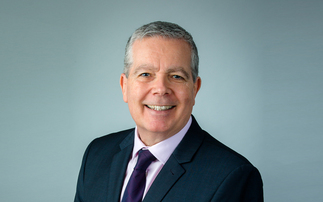INDUSTRY VOICE: 'Animal spirits' is the term John Maynard Keynes used in his 1936 book 'The General Theory of Employment, Interest and Money' to describe the instincts and emotions that ostensibly influence and guide human behaviour, for example: consumer confidence. Fidelity Portfolio Manager, Eugene Philalithis looks at why, across risk assets, the 'animal spirits' have been somewhat lacking in recent months.
Few investors are unequivocally risk-on, having had their confidence dented at the beginning of February, and set back further by trade tensions. That stands in sharp contrast to typically high-risk appetite towards the end of the cycle.
This is all the more surprising given the strength of earnings. US earnings are expected to rise by around 23% for the first quarter of 2018, the highest figure since the ‘profits recession' of 2015 and early 2016. Even adjusting for the one-off boost from Trump's tax cut, earnings growth should be as strong as the best quarterly results from last year, and markedly higher than expectations from even a month ago. So why have markets been so directionless, and lacking in Keynes' famous ‘animal spirits'?
Rising wages
One explanation is that markets have simply moved on from the earnings story, and are looking for something else to latch onto. That could centre around the rising costs of doing business. The potential for faster wage growth has long been present in the US, and higher labour costs were the initial trigger for volatility at the end of January. That month saw wages rising by 2.9% year on year, and while it was only one data point from one month, the market reaction was sudden. Subsequent releases have shown weaker wage growth, however, suggesting labour costs might be less of a concern — even with unemployment below 4%.
In the short term, however, the biggest difference in the cost of doing business may be the oil price. Tensions over Syria have clearly helped to boost prices, though this ‘geopolitical premium' could reverse quickly. But the narrative on oil does appear to be changing. The focus has shifted to how shale producers are maintaining capital discipline, and not over-committing to new production. Markets seem to be accepting that at least some of the rise in oil prices is fundamentally driven, and that new producers like shale companies are not going to come to the rescue and produce more oil. Investors may have no choice but to live with higher prices.
The impact of oil
For the meantime, moves in the oil market are having only a limited impact on bonds. Investors are generally assuming that growth will moderate from here and help inflationary pressures to ease. Short term bonds, repayable anywhere from a matter of months to around ten years, are where most of the upwards pressure on yields is. However, if commodity prices maintain their current levels, and we see inflation reaching 3% as a result, you could see a more significant impact across all parts of the bond market, with yields shifting up on longer dated debt too.
That's not what we expect for now. Inflation should stay contained, allowing the Federal Reserve — as well as central banks globally — to gradually remove accommodative monetary policy. But the most interesting development over April was that rising US interest rates have finally started to support the US dollar. This is most relevant to our position in local currency emerging market (EM) debt. While it is a negative development, we did anticipate it, and our hedge in several EM currencies performed an important role in protecting client's capital against a portion of the dollar's rise.
If we continue to see global growth outside the US moderating, the direction for the dollar will probably be upwards. But I don't think we'll see a dramatic strengthening phase like that from 2014-16. Apart from anything else, the rest of the world is in much better relative shape. EM currencies remain cheap based on their economic fundamentals, while the rise in commodity prices this year should boost many EMs' terms of trade. The complications come if a strong dollar derails commodity prices, the EM picture weakens, and the dollar rises in response to that. The likelihood of that negative feedback cycle is slight, but it is a risk we remain alert to.
When will the animal spirits return?
Whether we see a return to animal spirits then, depends on two things. The first is a continuation of the strong growth backdrop. We can afford to see economic growth slow a bit from here, but too much might mean investors getting nervous. Markets also need to find a new, positive narrative to latch onto, if only to prevent them from looking over their shoulder at labour costs, oil prices or a stronger dollar. Across the rest of the year, we will likely maintain our defensive positioning, adding to safe haven assets like US Treasuries. Where we are taking risk, we will attempt to think of efficient ways to protect our positions, without giving up a disproportionate amount of upside.
Find out more about Fidelity Multi Asset
Eugene Philalithis joined Fidelity in 2007 as a Portfolio Manager, with a focus on fixed income and alternatives. Eugene manages a number of multi asset funds with internal and open architecture for both retail and institutional clients. He has currently 17 years of investment experience which includes Russell Investment in London and Canadian Imperial Bank of Commerce in Singapore. Eugene has a Bachelor or Engineering and an MBA, both from Imperial College, London.











